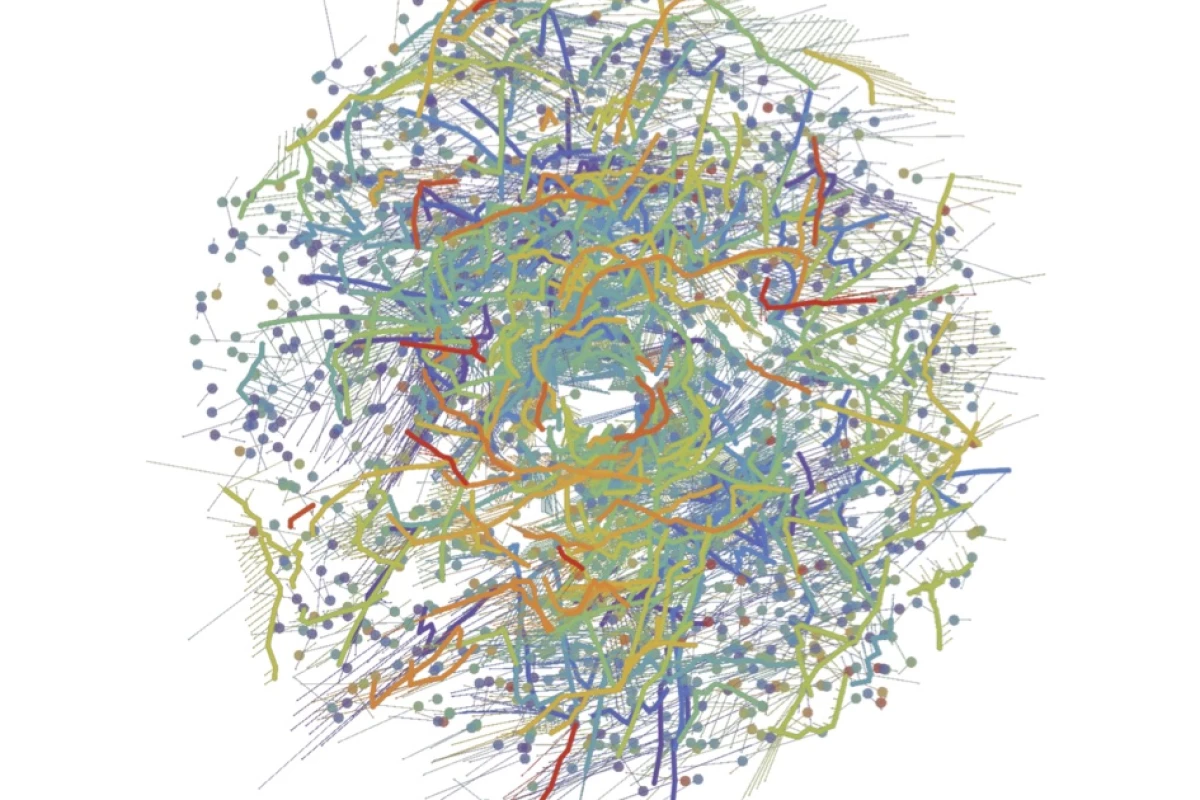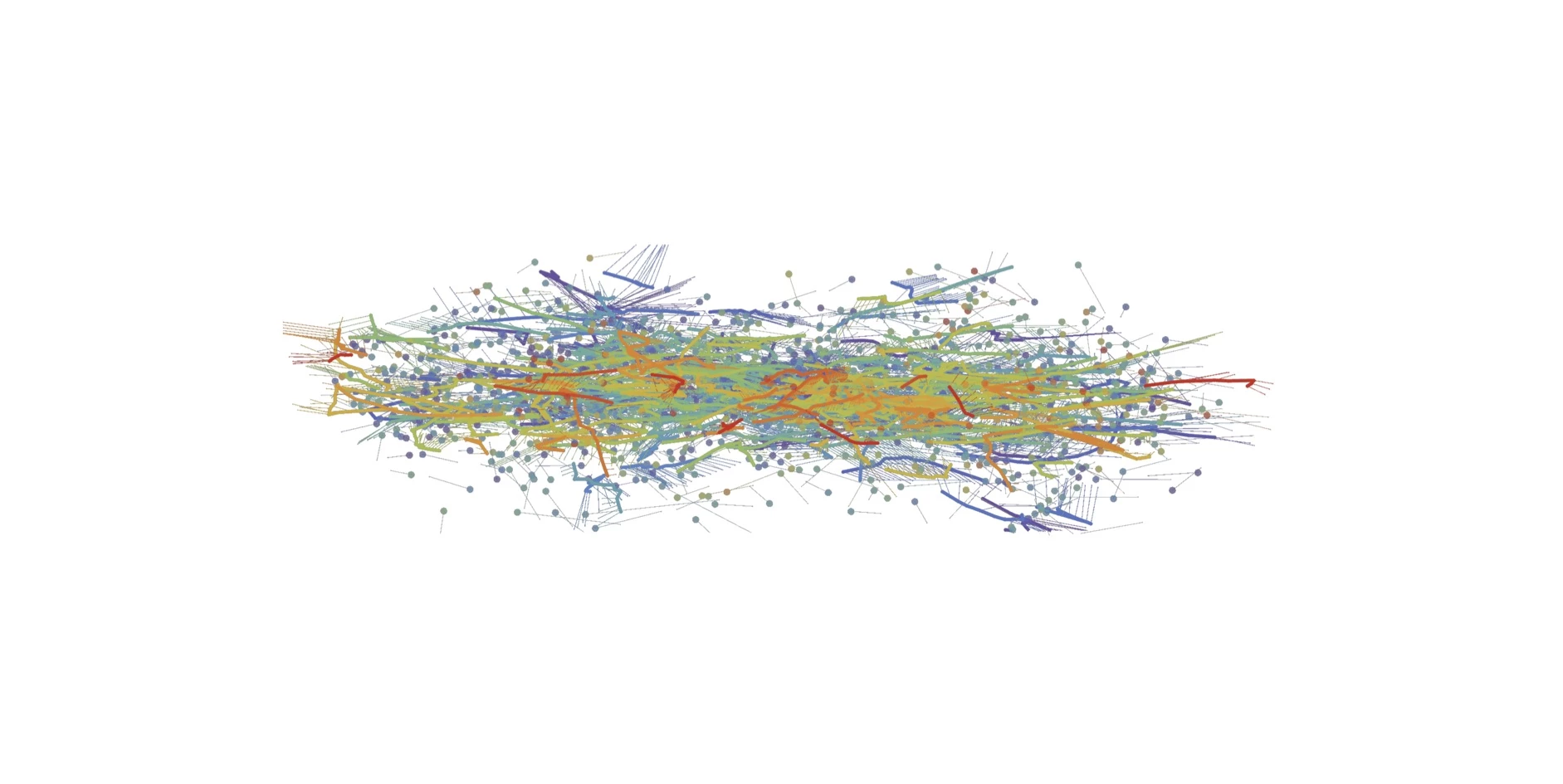It may look like a Jackson Pollock painting, but this colorful mess is actually a new map of the Milky Way, with dots and lines of different colors representing groups of stars that were born together. Compiled from Gaia’s galactic census released last year, this new view reveals that stars tend to hang out in huge “strings” with their siblings, long after birth.
Last April, the second major data release from ESA’s Gaia spacecraft mapped out the positions and movements of 1.7 billion stars in and near the Milky Way. Ever since, this invaluable resource has helped astronomers make some incredible new discoveries. That includes pinpointing a stellar baby boom during which half of the galaxy’s stars were born, narrowing down the home system of the interstellar comet ‘Oumuamua, spotting the scars of a collision with a ghost galaxy, and even calculating the mass of the entire Milky Way itself.
Now, researchers from Western Washington University have made a new discovery in the data. By examining the movements of stars in the comprehensive catalog, the team was able to determine groups that formed in the same place at similar times.
“To identify which stars formed together, we look for stars moving similarly, as all of the stars that formed within the same cloud or cluster would move in a similar way,” says Marina Kounkel, lead author of the study. “We knew of a few such ‘co-moving’ star groups near the solar system, but Gaia enabled us to explore the Milky Way in great detail out to far greater distances, revealing many more of these groups.”

Using the Gaia data, the researchers were able to identify almost 2,000 new groups of stars moving together, out to a distance of about 3,000 light-years from Earth. But what really surprised them was the fact that many of these stars seemed to clump together into strings, and stay that way for incredible amounts of time.
“Around half of these stars are found in long, string-like configurations that mirror features present within their giant birth clouds,” says Kounkel. “We generally thought young stars would leave their birth sites just a few million years after they form, completely losing ties with their original family – but it seems that stars can stay close to their siblings for as long as a few billion years.”
Interestingly, the strings of younger stars – those spring chickens less than 100 million years old – seem to stretch perpendicular to the spiral arms of the galaxy. The strings of older stars, meanwhile, seem to align with the spiral arms. The researchers suggest that this may be a natural part of the life cycles of the structures. Studying the older strings could also help astronomers figure out just how stable the spiral arm structure of the galaxy is.
The research was published in the Astronomical Journal. The animation below shows Gaia at work tracing strings of stars.
Source: ESA






